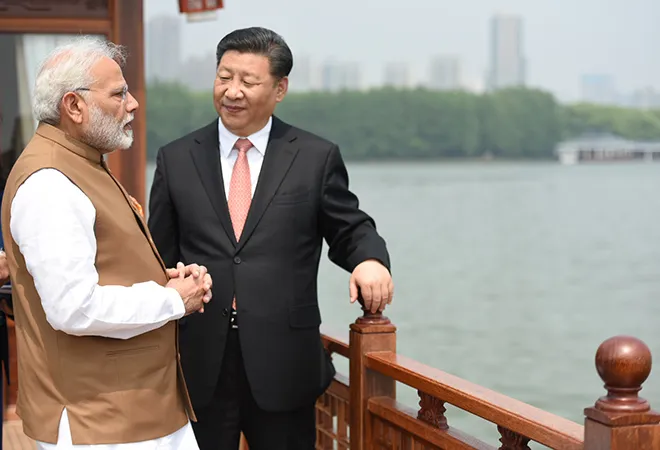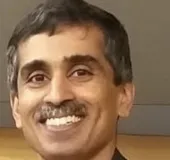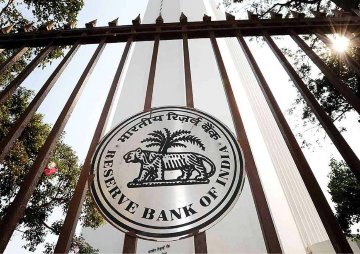
The first Indian casualties on the disputed India-China boundary since 1975 should be occasion to reconsider several long-held beliefs and methods of dealing with the relationship that successive governments in New Delhi have adopted over the years.
This essay will deal with just one trope – that foreign policymaking in India cannot be an open, public or democratic exercise and that ‘quiet diplomacy’ is the way to go in dealing with China. There are two central problems with such a position – both of which have been on view during the ongoing crisis on the LAC and which have severely constrained the Indian government’s ability to assess the situation as well as to find options to deal with it.
First, the desire to keep decision-making on China within the strict confines of the government has much to do with the run-up to the 1962 Sino-Indian conflict. The lesson learned following India’s defeat seemed to be that discussing matters openly in Parliament or with the general public tended to limit the freedom of manoeuvre for the Indian government to engage in negotiations with the Chinese side that would require compromises by New Delhi in order to have a realistic chance of a resolution that at least broadly met India’s interests.
If this tendency has continued within the Indian government, it has to do with a second reality valid until quite recently, which was that expertise on the border areas or on what went on there was limited to the Army and various paramilitaries – the Indo-Tibetan Border Police and previously, also the Assam Rifles, both under the Ministry of Home Affairs – that had manned the borders and/or with the diplomats and other civilian officials who held administrative charge of these areas.
There are good reasons why neither position is tenable any longer.
Public involvement increases room for manoeuvre
One, as under Mao Zedong, so also under present Communist Party (CPC) General Secretary Xi Jinping, China is a power that not only takes maximalist positions but also makes no effort to couch these in polite language or to even discuss alternatives. It is also a China that seeks to distract from internal strife and the leadership’s inability or incompetence in handling domestic crises with a shrill, victimhood-based nationalism. It is doubtful that Nehru’s India could have avoided eventual conflict with China given the Dalai Lama’s decision to flee Tibet to India or the need for Mao to both counter criticism for and distract attention from the Great Leap Forward, whose disastrous effects – tens of millions dead by starvation – the rest of the world would only come to know many years later.
Today, Xi Jinping faces a similarly fraught internal situation with an economy hammered by the COVID-19 pandemic and the long-aspired for goal of a ‘moderately well-off society’ by the CPC’s 100
th anniversary next year, looking ever more distant. Meanwhile, Xi’s policies since his ascension to power in 2012 – his centralization of power and his hard-selling of the ‘Chinese dream’ of nationalism, and of being a natural challenger to the United States –has had the implication of painting other countries as weaker than or less important than China. Thus, when a Vietnam or Indonesia or India decides to challenge China’s bad behaviour, the Chinese tendency has been to view such reactions with surprise as if the smaller country were being both unreasonable and arrogant.
While the incidents – whether in the South China Sea or on the LAC might be localized and the tactics used by military commanders shaped by local factors, they are sanctioned by the larger set of goals and objectives under Xi’s plans for ‘national rejuvenation’. Thus, whatever ‘strategic guidance’ he might have imparted to his military commanders following the Wuhan informal summit with Indian Prime Minister Narendra Modi in April 2018, it certainly was not aimed at maintaining peace and tranquillity on the LAC but ensuring dominance and constraining Indian behaviour.
While the incidents – whether in the South China Sea or on the LAC might be localized and the tactics used by military commanders shaped by local factors, they are sanctioned by the larger set of goals and objectives under Xi’s plans for ‘national rejuvenation’
Given this reality, the Indian government actually gains nothing from keeping its own public in the dark about goings on along the LAC or by infantilizing its citizens by portraying them as being unable to understand India’s international interests. On the other hand, open and accurate dissemination of information by the political leadership on the general state of relations with China as well as at the LAC specifically, would have helped with the current situation. In fact, if instead of being buried deep in various government reports, news about the numbers and nature of transgressions on the LAC had been actively disseminated and explained at least from 2017 when the Doklam standoff took place, if not earlier still, this would have created an iterative learning experience for the Indian public – including possibly its own soldiers – who would then have been both better informed about what is at stake and prepared for the troughs in the relationship.
Instead, what we have is a situation where Doklam has almost completely disappeared from public memory and the larger pattern of increasing Chinese assertiveness that has been underway for years already has been missed. The evidence for this last would have been available from Doklam itself if the government had been so minded to keep the media and the public focused on the area that Bhutan claims for its territory but which the Chinese have today more or less occupied entirely save for the exact spot of the original standoff itself. Instead, New Delhi diverted attention by the so-called ‘informal summits’ in Wuhan (2018) and Mamallapuram (2019) that departed from the norm of even minimal transparency by providing neither a joint statement nor any clearly defined set of commitments that the two sides had agreed on.
Meanwhile, the Chinese have begun to claim that they too, now have to acknowledge ‘public opinion’ on their side, while India which is a democracy enters the negotiating room with one hand tied behind its back simply because it cannot leverage its public opinion.
The Chinese have begun to claim that they too, now have to acknowledge ‘public opinion’ on their side, while India which is a democracy enters the negotiating room with one hand tied behind its back simply because it cannot leverage its public opinion
What is more, the deaths of Indian soldiers on the LAC will probably now also set off great confusion about how such a situation could come to pass when the average Indian thought all this while that the only real existential threat came from Pakistan. In fact, even without the Indian casualties on the LAC, it could be argued that the Modi government had created an unintended consequence in the form greater Indian public attention on China precisely by focusing frequently and loudly on its tough responses to Pakistani provocations and claiming that it had done what previous governments had failed to do. In terms of responding to Chinese provocations, therefore, ‘
yeh dil maange more’ (the heart wants more) might now well become the attitude of the average Indian on China, too.
Greater expertise on China is available
Two, it is no longer the case that expertise on China or on India’s border areas with China are limited to only within the Indian government, even if this expertise has gone up considerably and continues to grow especially among the middle and junior rungs of the military leadership. Despite consistent lack of government support, there is today a whole generation of young Indians who, ironically, have the Chinese government to thank for some extremely generous – by Indian standards – scholarships to study in China and have, as a result, developed significant expertise as well as niche areas of specialisation on that country. Also to be thanked is the Taiwanese government that has for over 15 years run its own set of scholarships and fellowships for Indian students and academics as part of its outreach to India and a desire to diversify its options in global politics and economy – a move that New Delhi itself has failed to reciprocate in substantive measure.
One might also add that China’s Belt and Road Initiative and its attempt in the opening years of the project to gain India’s support also meant invitations to conferences for Indian scholars, including of older generations – opportunities for travel and discussion that they simply had not had in all the years past owing to lack of money for field trips in Indian universities and think-tanks. These occasions served to open Indian eyes and minds to the scale of just what the Chinese were up to in the Xi era. While scholars who were not specialists of China were justifiably impressed with glitz and ambition of a conference even in a mid-size Chinese city, they too, eventually came around to observing and highlighting what Indian students in China as well as China specialists in India soon perceived to be Beijing’s zero-sum approaches in foreign policy and economic globalization.
It has been easy for both serving and former Indian government officials to tar Indian scholars and students who have studied in China as being soft on the country or having their heads turned by Chinese inducements. The chances of this happening are about the same as the chances of Indian diplomats or intelligence officers posted in China selling their country short. But one reason why such statements continue to have currency is a desire by sections within government to protect the government’s imaginary ‘freedom’ of manoeuvre, from criticism that if they acknowledged as valid would require uncomfortable changes of course and loss of turf and privilege. It is time to bury this ostrich mentality within the government and to both move faster to tap expertise outside its four walls as well as to open the purse-strings to more generously fund China studies in the country.
Conclusion
The deaths of Indian soldiers along the LAC at Galwan is a watershed moment in the India-China relationship. If the relationship is not to spin out of control and if India needs to develop the muscle – military, economic and intellectual – to tackle the long-term China threat on the borders as well as the challenges that Beijing poses in the region and globally, not only will New Delhi have to adopt transparency and openness to questions as a central plank of the reworking of its China policy but also partnership with and support for expertise on China in India’s universities and think-tanks. The
first is a policy change that can be achieved practically overnight if the government wills it. The
second is currently available from sections of the government episodically but needs to become more widespread and sustained. Together, these changes could well ensure that the tragedy on the LAC is not for nothing.
The views expressed above belong to the author(s). ORF research and analyses now available on Telegram! Click here to access our curated content — blogs, longforms and interviews.



 The first Indian casualties on the disputed India-China boundary since 1975 should be occasion to reconsider several long-held beliefs and methods of dealing with the relationship that successive governments in New Delhi have adopted over the years.
This essay will deal with just one trope – that foreign policymaking in India cannot be an open, public or democratic exercise and that ‘quiet diplomacy’ is the way to go in dealing with China. There are two central problems with such a position – both of which have been on view during the ongoing crisis on the LAC and which have severely constrained the Indian government’s ability to assess the situation as well as to find options to deal with it.
First, the desire to keep decision-making on China within the strict confines of the government has much to do with the run-up to the 1962 Sino-Indian conflict. The lesson learned following India’s defeat seemed to be that discussing matters openly in Parliament or with the general public tended to limit the freedom of manoeuvre for the Indian government to engage in negotiations with the Chinese side that would require compromises by New Delhi in order to have a realistic chance of a resolution that at least broadly met India’s interests.
If this tendency has continued within the Indian government, it has to do with a second reality valid until quite recently, which was that expertise on the border areas or on what went on there was limited to the Army and various paramilitaries – the Indo-Tibetan Border Police and previously, also the Assam Rifles, both under the Ministry of Home Affairs – that had manned the borders and/or with the diplomats and other civilian officials who held administrative charge of these areas.
There are good reasons why neither position is tenable any longer.
The first Indian casualties on the disputed India-China boundary since 1975 should be occasion to reconsider several long-held beliefs and methods of dealing with the relationship that successive governments in New Delhi have adopted over the years.
This essay will deal with just one trope – that foreign policymaking in India cannot be an open, public or democratic exercise and that ‘quiet diplomacy’ is the way to go in dealing with China. There are two central problems with such a position – both of which have been on view during the ongoing crisis on the LAC and which have severely constrained the Indian government’s ability to assess the situation as well as to find options to deal with it.
First, the desire to keep decision-making on China within the strict confines of the government has much to do with the run-up to the 1962 Sino-Indian conflict. The lesson learned following India’s defeat seemed to be that discussing matters openly in Parliament or with the general public tended to limit the freedom of manoeuvre for the Indian government to engage in negotiations with the Chinese side that would require compromises by New Delhi in order to have a realistic chance of a resolution that at least broadly met India’s interests.
If this tendency has continued within the Indian government, it has to do with a second reality valid until quite recently, which was that expertise on the border areas or on what went on there was limited to the Army and various paramilitaries – the Indo-Tibetan Border Police and previously, also the Assam Rifles, both under the Ministry of Home Affairs – that had manned the borders and/or with the diplomats and other civilian officials who held administrative charge of these areas.
There are good reasons why neither position is tenable any longer.
 PREV
PREV


